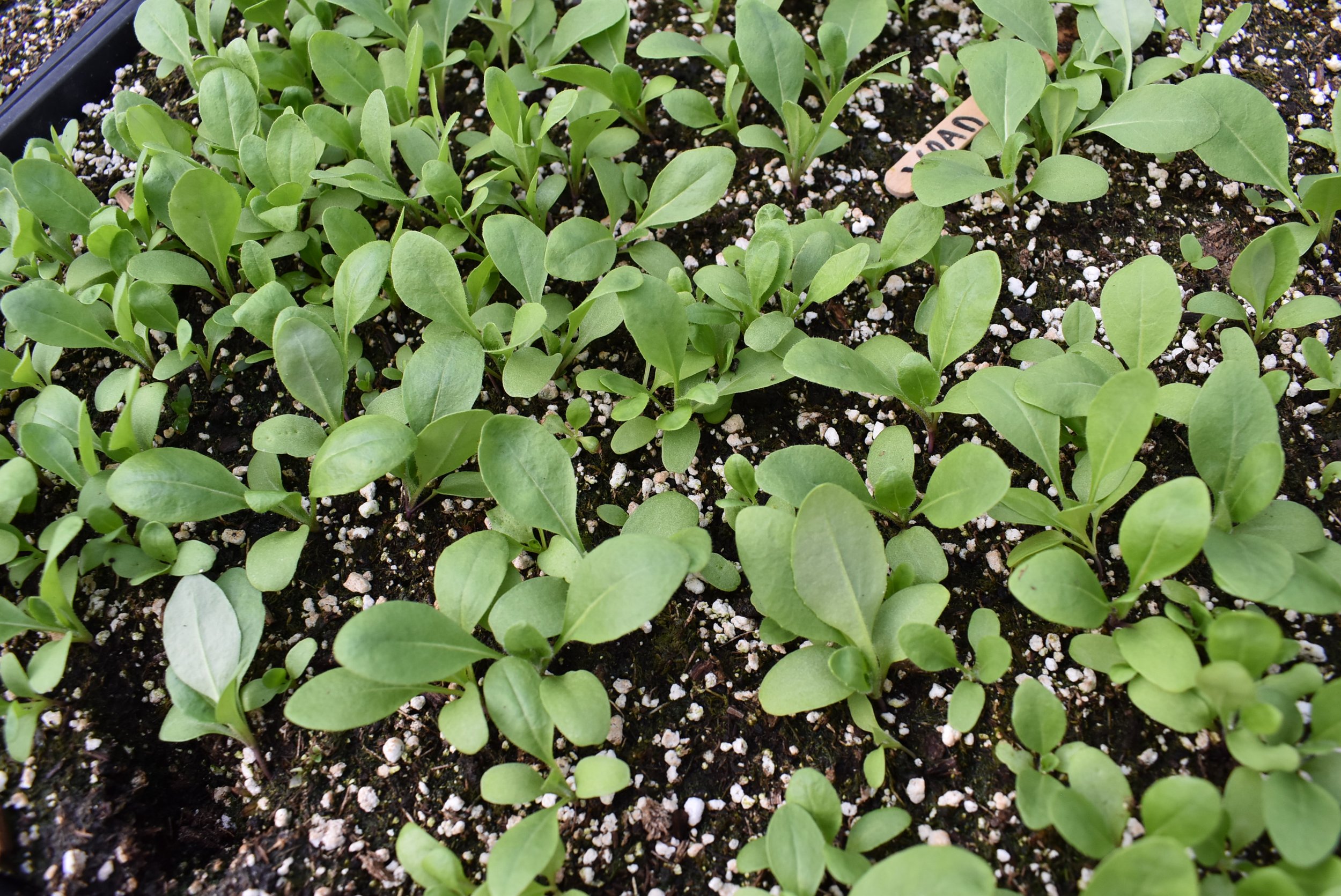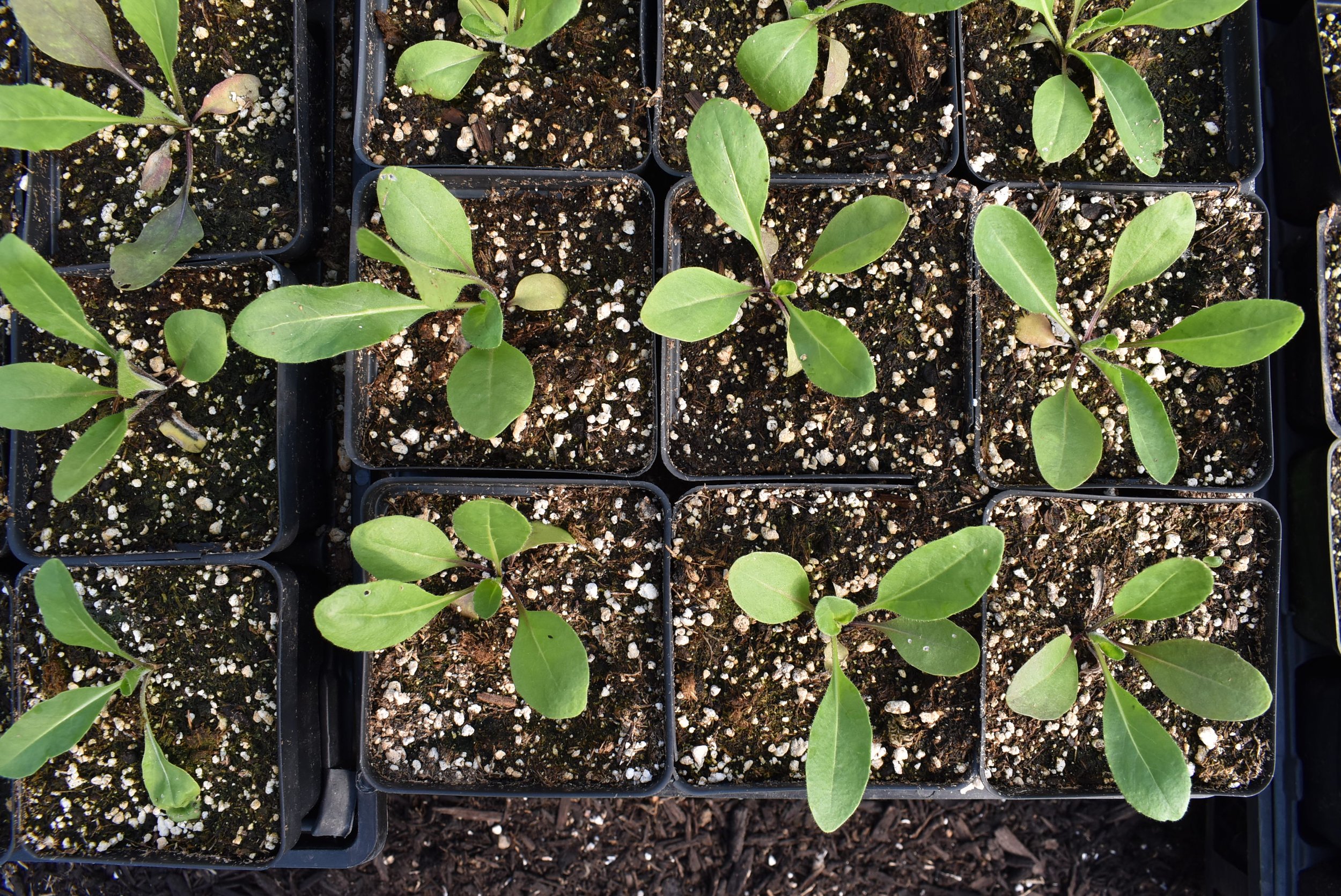
Seeds
All seeds are grown on our farm without the use of chemicals; and are untreated, open-pollinated, hybrid-free and GMO-free.
Woad Seeds
Woad Seeds
Our own farm-grown Woad (Isatis tinctoria) seeds for organic growing.
All seeds are grown on our farm without the use of chemicals; and are open-pollinated, hybrid-free and GMO-free.
1 pkg (approx 60 seeds)
Common Names
Woad, Dyer’s Woad
Botanical Name
Isatis tinctoria
Plant Family
Brassicaceae (Mustard Family)
Native Range
Russia, Eastern Europe, Middle East
Life Cycle
Biennial
Hardiness Zone
4-9
Habit
Woad produces a low basal rosette of slender blueish-green leaves in the first year, followed by bushy upward growth and yellow-flowering stems to 3ft tall in the second year. Very early spring bloomer.
Sun/Soil
Full sun to part shade. Not fussy about soil.
Germination/Sowing
The seeds germinate easily and can be direct sown in spring or fall, or sown in flats in the spring and then transplanted out once they are big enough.
Growing/Care
The seedlings are fast growing and care should be taken to transplant them into larger pots, or directly into the garden, so that they don’t become stunted in a too small container. Crowding and stunting of plants in their pots, can cause them to bolt (prematurely go to flower and seed).
Woad has been cultivated all over Europe since ancient times for the deeply coloured pigment contained within its leaves. Today Woad is commonly found naturalized across southern Europe, as well as parts of North America.
It is recommended that the entire plant be harvested in the first year to prevent self-seeding the following year. The plants produce the most beautiful metallic-indigo coloured seeds after flowering. Beware that if left to self-sow, you will have Woad returning year after year in your garden. It is best to be mindful of this invasive and harvest the plants before they set seed to prevent spreading into the wild.
Harvesting
The leaves are harvested in the first year or second year of growth. Traditionally the leaves are collected while the plants are in bloom, then fermented, made into cakes, mixed with water, and then fermented a second time. The deep indigo-blue colour is extracted by infusing the fermented Woad leaves with lime water.
Culinary Uses
N/A
Medicinal Uses
Woad is antibiotic, antiviral, anti-inflammatory, and anti-cancer. Another species Chinese Woad (Isatis indigotica) has been used in Traditional Chinese Medicine for thousands of years.
Woad pigment, as well as being used to dye wool and fabrics, and paint pottery, was once used by Celtic warriors to paint their bodies ceremonially before battle. It may be that the word ‘Britain’ came from this custom of war-painting, as the old Celtic word for paint was Brith and Brithon meaning ‘stained man’.
Themes
Apothecary Garden, Drought Tolerant, Deer Resistant, Attracts Pollinators, Dye Plant.


















